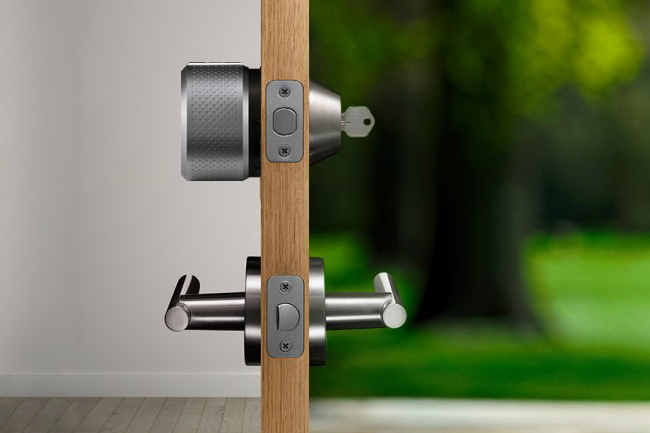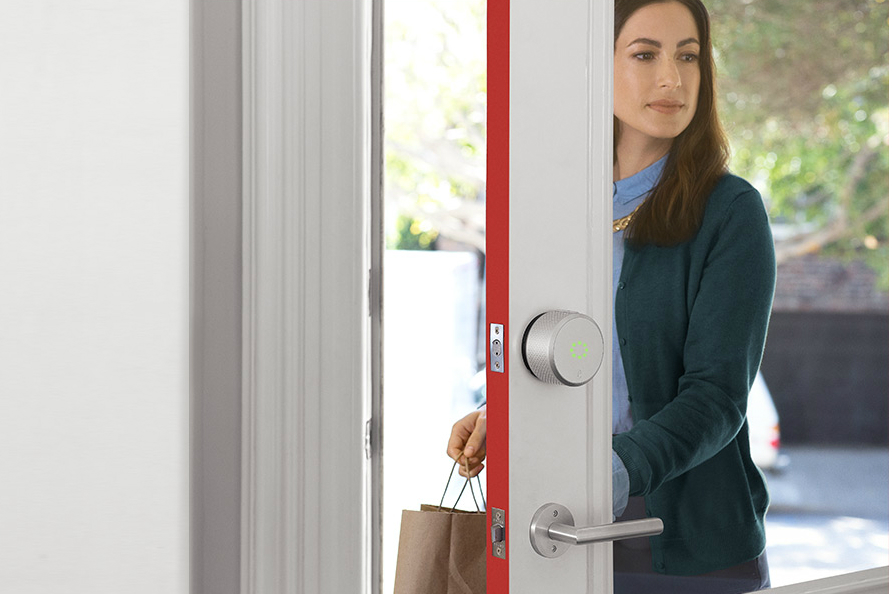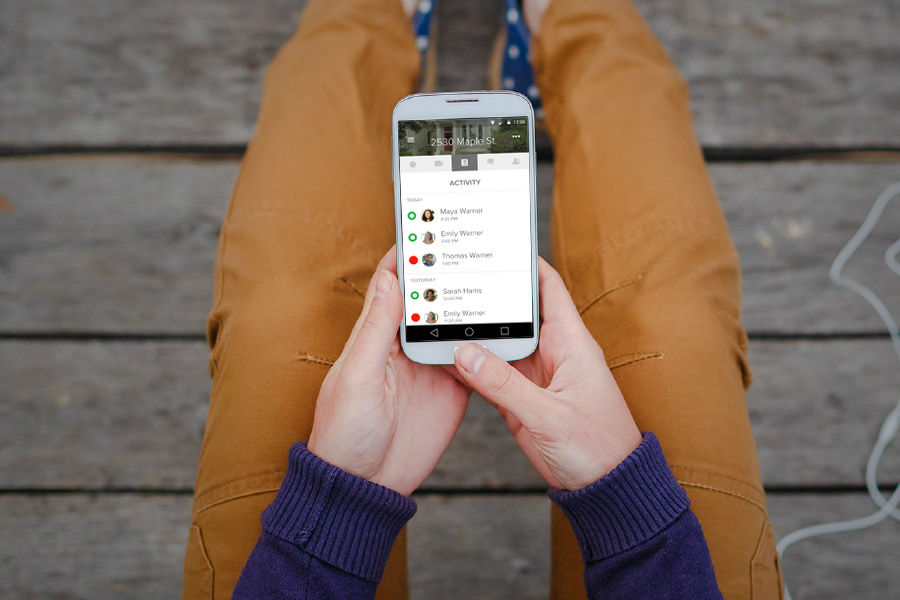August needed a whole new lock in order to comply with Apple’s HomeKit standards. It took the opportunity to update a few features, but it retains the same look and feel as the original. While no one on the outside of your door will know about your smart lock, once inside visitors may stare at the round, silver protuberance where your deadbolt used to be. It’s not that it’s ugly, but it may kill your whole “quaint country cottage” vibe, if that’s what you’re into.
Provided you have a compatible deadbolt, August prides itself on being practically fail-proof when it comes to installation. As long as you don’t try to screw the mounting plate on backwards (guilty), the nuts-and-bolts part should take around 10 minutes. It was far easier to put in than many other smart locks, which require you to replace the bolt, key hole, and so on. With August, you’re just removing the thumb latch, aka the thing you use to lock the door when you’re inside. You will need a screwdriver, but that’s about it. One of the nice new updates is a magnetic faceplate for the lock, which snaps on and off to grant fairly easy access to the batteries.
Once the August is on your door, things get slightly more complicated. You’ll need the iOS or Android app. It walks you through each of the steps, like calibrating the lock by manually turning it either way, and takes only a couple minutes. It will then ask if you want to enable Siri, prompting you to give your lock a name (which you must remember) and assign it to your HomeKit home. From there, you can go on to customize your settings, like setting the door to automatically lock 30 seconds to five minutes after you unlock it and automatically opening when you’re within 100 to 5,000 meters. (Don’t worry — if you walk by the door with your phone it won’t unlock. It only auto-unlocks if the app detects you’ve left home.) The autolock feature works almost too well; I nearly locked myself going to get the mail.
I had some trouble getting Siri to cooperate. I asked her to unlock the door. She said no. Actually, she said she couldn’t find any devices. I had to go back into my settings (and then my Home settings, it wasn’t the easiest to find out how to access my Siri settings). I did a factory reset, started over again, and she complied with my requests. She can also tell you if your door is locked. Of course, she wouldn’t do anything unless I already had my phone unlocked — she wouldn’t even tell me if my door was unlocked — which is of course a safety feature, but enough of a hassle that it meant I was quicker to rely on the auto-unlock feature than Siri when it came time to open the door.
These features only work if you’re in fairly close proximity to the lock, unless you have a fourth-generation Apple TV. That will let you use Siri to remotely lock and unlock your door, if, say, your roommate or kid forgot their keys. That’s a great feature, but it’s not like you can fire up a HomeKit app (it doesn’t exist) and set it up, so it may take a couple of tries to get it up and running. Otherwise, there’s a $79 Connect accessory that lets you link the August to your Wi-Fi. And if you’ve gone full-bore on the HomeKit experience, you can incorporate the lock into your scenes.
One of the things I really like about the August is that it’s quiet. That may seem like a small thing, but compared to some smart locks I’ve tried, which can best described as making a metallic gnashing sound, the soft whir of the mechanism is most welcome. At $230, it’s not the cheapest smart lock on the market, but it is definitely one of the easiest. It’s nice that owners of a fourth-gen Apple TV get to skip the Connect bridge to take full advantage of August’s features but on its own using Siri to unlock the door isn’t a revelatory experience.





